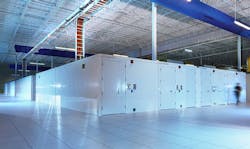Phoenix Data Center Business Driven by Both Local & National Demand
We continue our series of stories on the leading geographic markets for data center space. Data Center Frontier is partnering with DatacenterHawk to provide in-depth market reports on each city we profile. This time, we explore the Phoenix data center market. The last entry in our four-part series outlines the Phoenix data center business environment.
Download the full report.
The Phoenix market sees demand from local businesses, but has become a destination for providers from other markets — particularly California — who are seeking to place data center assets in a location with low disaster risk, either for primary or backup data centers.
Connectivity
Phoenix has good fiber infrastructure. CenturyLink, Electric Lightwave/Integra, Level 3, Sprint, XO, and Zayo all run long-haul fiber connections through Phoenix. Carriers such as ICFN, Syringa, Tru Com, and Windstream have developed locally-focused fiber networks. Municipal fiber is available in Mesa, AZ to serve the area’s data centers.
Power
Power costs in Arizona are well below the national average. Similar to the Los Angeles market, Phoenix is served by a public utility provider of power and water, the Salt River Project (SRP). An integrated utility, SRP provides electric generation, transmission, and distribution services in the Phoenix metro area. A privately-owned competing electric provider, Arizona Public Service (APS), serves most of the Phoenix market where data centers are clustered. Both SRP and APS offer a diverse fuel mix that includes renewable sources such as hydroelectric and solar. Phoenix’s plentiful sunshine is a double-edged sword for the data center industry: It offers an almost year-round source of “green” energy (driving public and private investments in solar power infrastructure construction, largely to accommodate a major Apple manufacturing facility in the area) but also requires more electricity to cool data centers during the area’s numerous days of over 100-degree Fahrenheit temperatures.
Disaster Risk
Phoenix is rated as a low risk for all types of natural disasters. Hurricane damage is non-existent, floods are uncommon, and there are no major fault lines to cause seismic events in the Phoenix market.
Economic Development
In an effort to lure data centers to the Phoenix market, Arizona offers a ten-year wavier on state, county, and local sales taxes on both equipment purchases and labor services for data centers — which has certainly served to ramp up Phoenix data center business.
Furthermore, data center projects that qualify as Sustainable Redevelopment Projects are eligible for an additional 10-year waiver on sales taxes. To qualify, a new data center must either fill a building that was at least 50% vacant,or attain a green building status such as Energy Star or LEED.”
This Data Center Frontier series focused on the Phoenix data center market also covered the following topics for the area:
Download the full Data Center Frontier Phoenix special report, courtesy of Iron Mountain.
And for further coverage, check out Data Center Frontier’s page dedicated to the Phoenix Data Center Market, that will provide the latest stats and info on this quickly growing area that is becoming a leading market in the colocation industry.
About the Author



